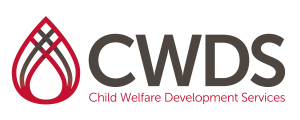CWDS Curriculum
SUBSTANCE ABUSE CASE CONSIDERATIONS AND PLANNING
Level: Advanced Practice – Lineworkers and Supervisors
Credits: 6
Intended Audience: Child Welfare Line workers and/or Supervisors
Description of Course: This course is intended to provide a deeper understanding of substance abuse as it relates to impact to the child. Line staff and supervisors will by the end of this course have opportunities to incorporate the strategies of Safety Organized Practice by specifically having time in this class to develop Harm, Danger and Safety Goal Statements. They will also practice developing action oriented plans that support the safety goal and also assist in demonstrating protective actions through visitation planning.
Intended Objectives:
- Identify the physical and behavioral signs of substance abuse including related paraphernalia.
- Identify elements of the assessment of parents suffering from the Illness of Addiction, including those suffering from Co-Occurring Disorders.
- Identify the diagnostic indicators of maternal chemical abuse vs. dependency.
- Discuss the various chemicals of choice and their effect upon gamates, the fetus, the neonate, infant and growing child.
- Present the parenting dichotomy and potential multi-generational effects.
- Identify various treatment and auxiliary interventions.
- Using a video clip and/or case scenario of a family where substance abuse is occurring, trainees will identify and be able to create harm statements, danger statements; describe impact of abuse on child; and strengths/protective factors
- Using a video clip and/or case scenario of a family where substance abuse is impacting the child, trainees will create/write a behaviorally specific case plan including safety goals
- Trainees will recognize best practice assessment, treatment, and case management practices (monitoring, visitation, reunification) in substance abuse cases and will be able to develop a visitation plan where families can demonstrate
Topics Include:
- The Diagnostic Criteria for Chemical Abuse vs. Chemical Dependence
- Possible Physical Ramifications of Perinatal Exposure During Each Trimester
- Obstetrical Complications Associated with Drug/Alcohol Exposure
- Medical Complications Encountered in Pregnant Intravenous Addicts
- Neonatal Response (Apgars) and Withdrawals
- Developmental Concerns
- Discuss how “severity of impairment”, “appropriate intensity of treatment” and
- “measures of prognosis,” relate to child welfare assessments
- Assessing substance abuse and identifying Co-Occurring Disorders
- Assessing Substance Abuse issues in Child Welfare Families
- Identifying physical and behavioral signs of substance abuse
- Review of best practice guidelines as related to assessment, treatment, and case management decisions with families where substance abuse is impacting the safety of the children
- Creating and maintaining physical and psychological safety when making visitation and reunification decisions



